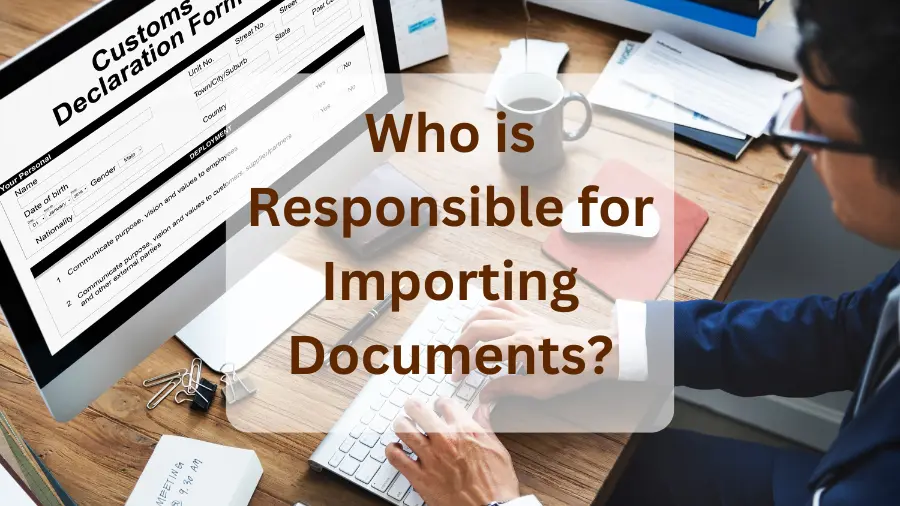Customs doesn’t negotiate—it checks documents. From invoices to certificates of origin, every detail must be accurate, complete, and compliant. One oversight can mean penalties, shipment holds, or even outright rejection.
This guide breaks down each party’s responsibilities, provides an essential document checklist, and explains how strong documentation safeguards both compliance and efficiency in global trade.
Who is Responsible for Importing Documents?
The responsibility for importing documents is shared among various parties, with the Importer of Record holding the primary accountability. Below is a breakdown of each party’s role in the process:
Importer of Record (IOR)
The IOR is the party legally accountable for ensuring all required documents are complete, accurate, and submitted to customs. They also handle the payment of duties and taxes.
Customs Brokers
Customs brokers assist the IOR by preparing and submitting documentation, ensuring correct tariff classification, and managing clearance procedures.
Freight Forwarders
Forwarders arrange transport and provide logistics documents such as bills of lading and shipping manifests, ensuring alignment with the shipping process.
Exporters
Exporters provide essential documentation, including commercial invoices, packing lists, and certificates of origin. These documents are critical for ensuring compliance with customs regulations and facilitating smooth customs clearance.
Why Proper Documentation Is Important?
Proper import documentation is important because it:
-
Ensures Legal Compliance – Customs authorities require precise paperwork to confirm the origin, classification, and value of goods.
-
Prevents Costly Delays – Missing or incorrect documents often lead to port holds, inspections, or demurrage fees.
-
Reduces Duty & Tax Risks – Accurate invoices and certificates prevent misclassification that could trigger higher duties or penalties.
-
Protects Against Disputes – Documents like the Bill of Lading and Commercial Invoice provide legal proof in case of claims or insurance issues.
-
Unlocks Trade Benefits – Certificates of Origin allow businesses to take advantage of free trade agreements (e.g., AfCFTA), lowering tariffs.
-
Improves Supply Chain Efficiency – Clear, consistent documentation helps forwarders, brokers, and importers coordinate seamlessly.
Streamline Your Import Process with Expert Guidance
Strong documentation isn’t just about compliance—it’s about protecting profits, timelines, and customer trust. A single missing invoice or inaccurate certificate can delay shipments, inflate costs, or damage your credibility with clients.
That’s why IOR Africa takes a compliance-first approach. We manage the full spectrum of import documentation with accuracy and efficiency, ensuring everything is complete, compliant, and ready for customs. With expertise across 70+ countries, we help businesses avoid risks, reduce delays, and keep their supply chains moving without disruption.

